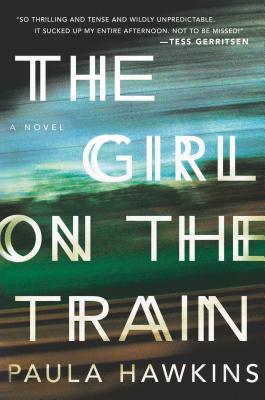One for sorrow, two for joy, three for a girl . . . Three for a girl. I’m stuck on three, I just can’t get any further. My head is thick with sounds, my mouth thick with blood. Three for a girl. I can hear the magpies—they’re laughing, mocking me, a raucous cackling. A tiding. Bad tidings. I can see them now, black against the sun. Not the birds, something else. Someone’s coming. Someone is speaking to me. Now look. Now look what you made me do.Everyone is comparing The Girl on the Train to Gone Girl and that's a train (har, har) that I'll jump onto, too. And it's not just because both books are feminine-perspective thrillers, but both have the same converging plotlines structure. In this book, we start with Rachel: a thirty-something alcoholic loner whose daily highlight is when her commuter train stops at a signal behind the home of a couple she has nicknamed "Jason and Jess". They are often in their back garden and Rachel longs for the type of closeness this couple displays. One morning, as Rachel's train stops in its usual spot and she takes her daily peek into Jason and Jess' lives, she witnesses something shocking (a very Hitchcockian scene). Later, when it makes the news that this woman (who is actually named Megan) has gone missing, Rachel realises that although she had had an alcoholic blackout the night Megan disappeared, she was definitely in their neighbourhood that night and might or might not have witnessed something important. But will anyone believe such an unreliable witness? Especially if it's revealed that Rachel has more ties to the case than she's letting on?
As Rachel's timeline proceeds slowly forward, a day at a time, alternating sections are told from Megan's perspective, starting a year earlier, and skipping quickly toward the circumstances of her disappearance. There are also several sections from the perspective of Anna -- Rachel's ex-husband's new wife -- and although she can give a third party insight into who Rachel really is, Anna has an agenda of her own. All three of these characters reveal themselves to be unlikeable, and as the men in the story are also unmasked as potentially untrustworthy, there are plenty of suspects -- if indeed Megan has met with foul play. A major problem that I had with Gone Girl was that the timelines converged too soon and it felt like Gillian Flynn didn't know what to do with her characters after that point. In The Girl on the Train, the timelines converge at the very end, and potentially, a reader could be wondering whodunnit right up to that point.
This is a compelling read with many believable characters who more or less behave like real people. I liked that author Paula Hawkins allowed Rachel to just be an alcoholic -- someone who would continue to drink until she passed out even though she was going through something that required her attention; I think it would have been dishonest to have her go cold turkey instead of being a normal, fallible human. The writing was interesting, if not particularly quotable, and I found it easy to plow through in a couple of sittings. Not deep but certainly enjoyable, I'd probably give it 3.5 stars if I could but am unwilling to round up to 4.

